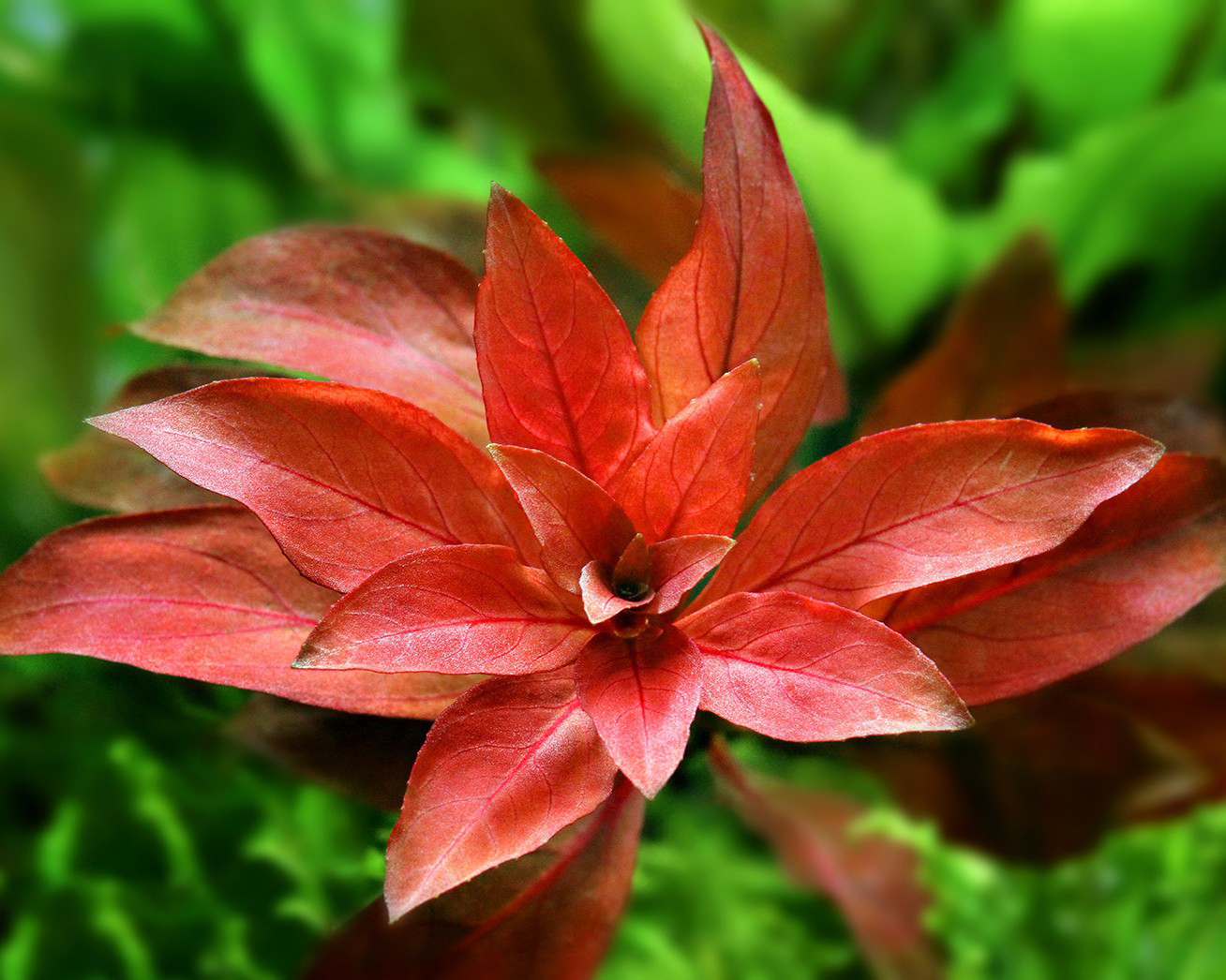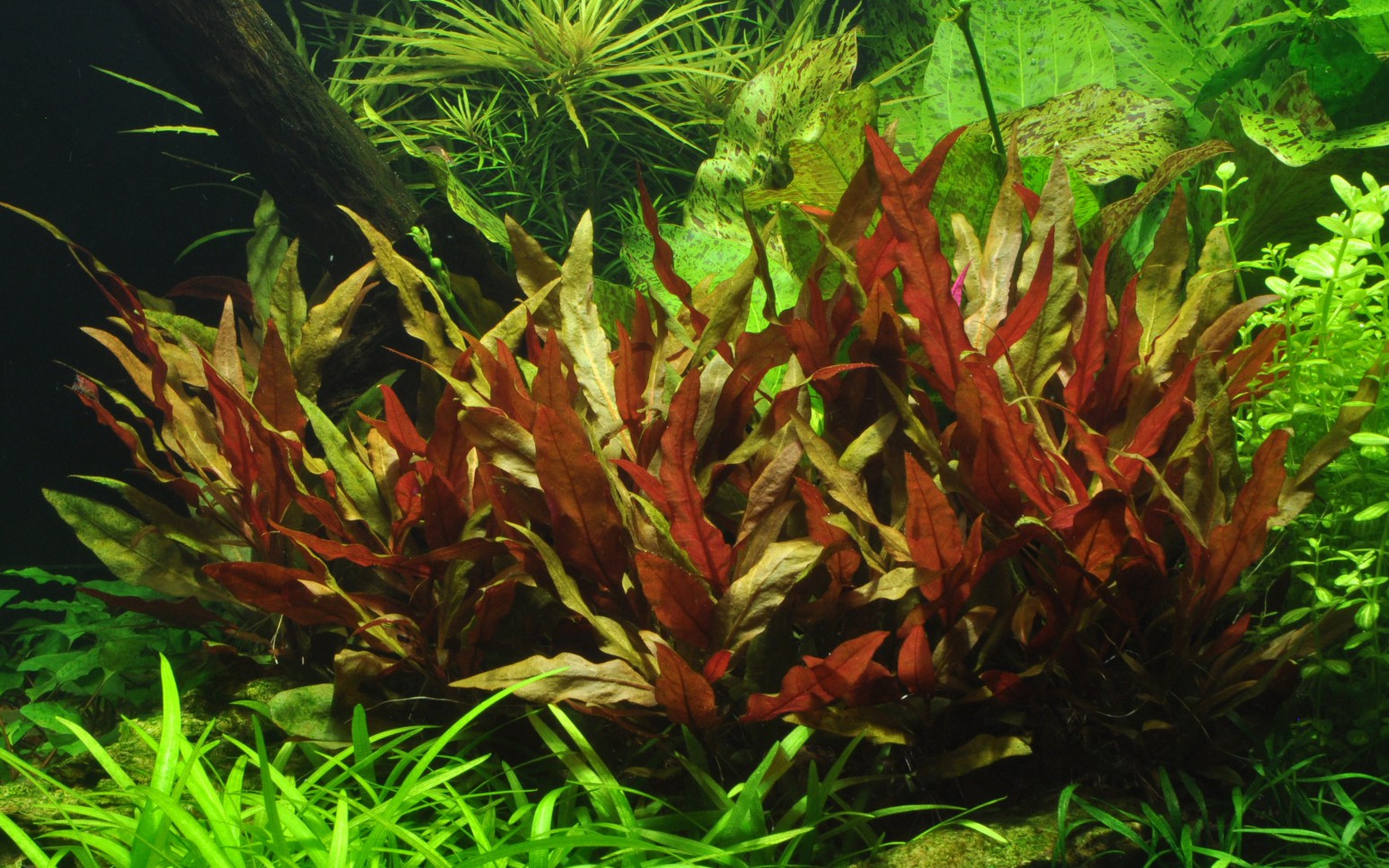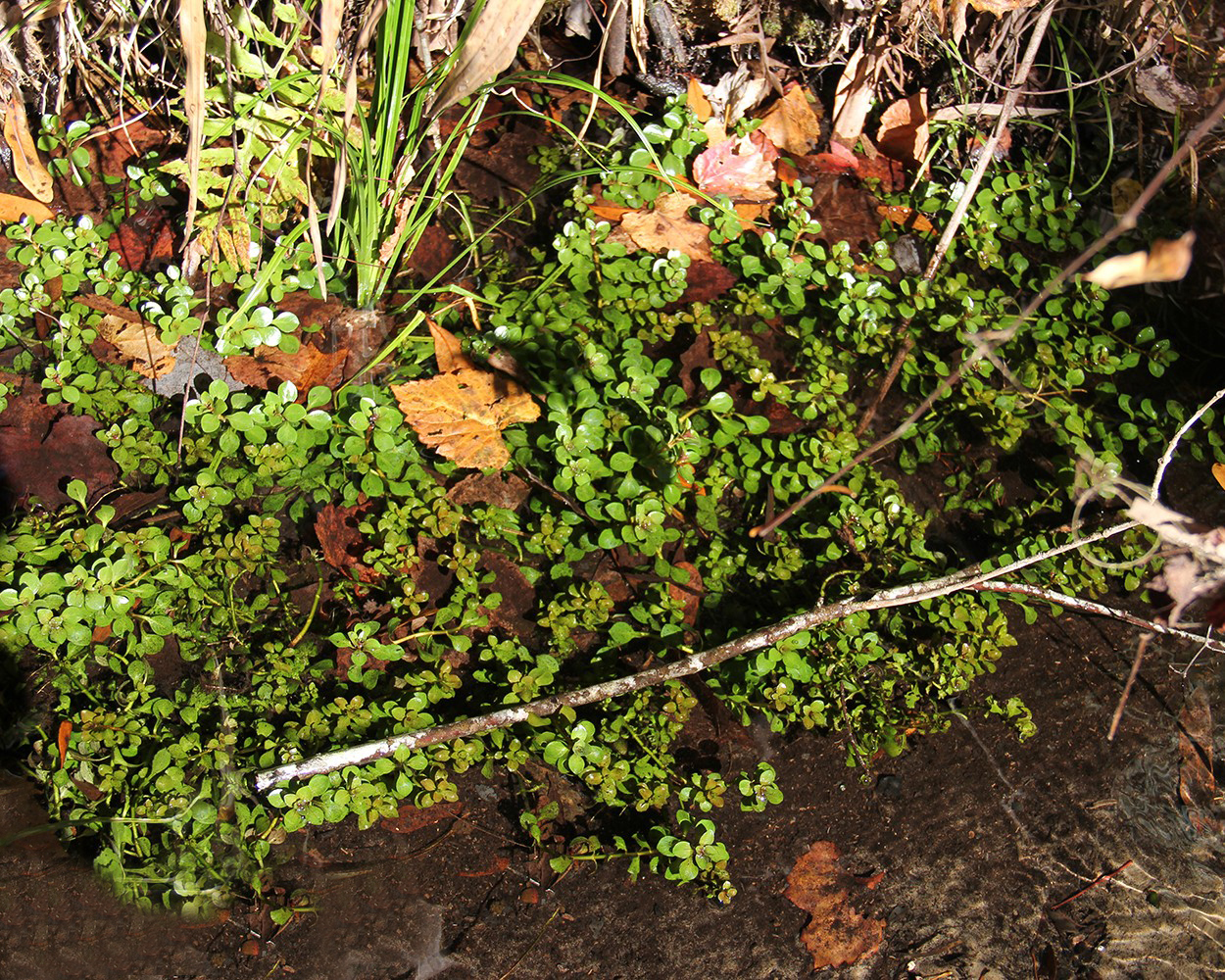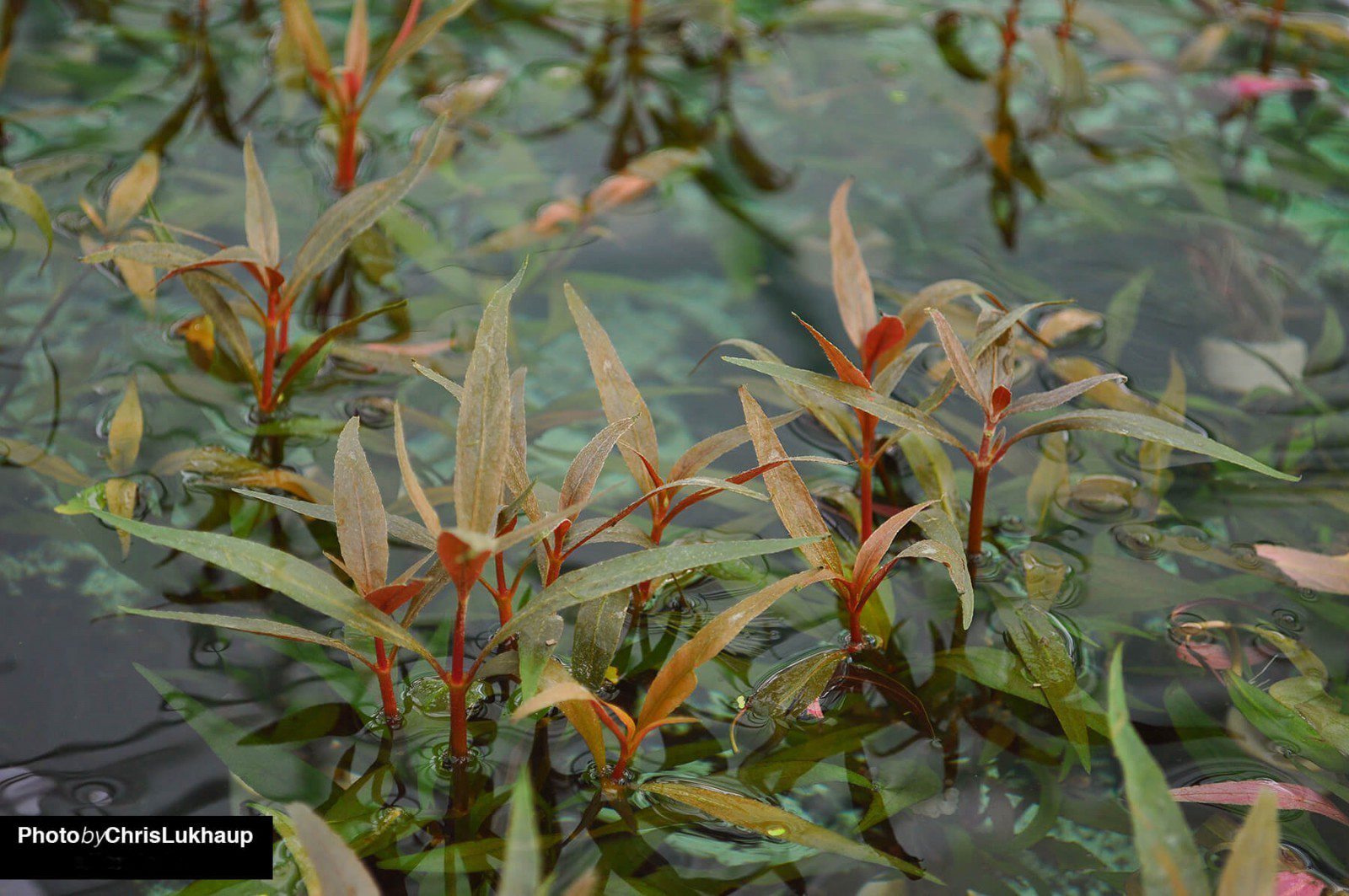Water aquarium plants correctly
What are aquarium plants actually?
Most aquarium plants are not really aquatic plants at all, but grow in swampy areas that are under water for long parts of the year. These swamp plants can therefore grow both under water (submerged) and above water (emersed). Exceptions to this are the true aquatic plants such as Vallisneria, hornwort, waterweed, Cabomba and the tuberous plants Aponogeton and Nymphaea (Lotus). They cannot survive above water, so it is imperative that they be grown submersed.

Plants from the nursery
The so-called conventionally produced plants are usually grown above water in aquatic plant nurseries. This gives the plants access to CO2 in the air, which is advantageous because it allows the nursery to save on expensive carbon fertilization. The vast majority of aquarium plants are not grown in Germany, or even in Central Europe, for cost reasons. Plant breeding takes place mainly in warm countries, predominantly in Asia. In these countries the temperature is much more suitable for plant cultivation, the expensive heating costs are omitted and the plants can be produced cheaply.
Import of aquarium plants
However, if you want to import plants into the EU, you have to make absolutely sure by law that they do not bring any unwanted co-inhabitants, i.e. foreign organisms. Examples like the boxwood borer, the Colorado potato beetle and many other introduced animals and plants are very deterrent. Before export from their countries of origin, aquarium plants are therefore made free of foreign organisms. This is usually done with pesticides, i.e. with poison. These substances do not harm fish, but shrimp belong to the same class of animals as most plant pests - arthropods. Therefore, all poisons directed against plant pests are also lethal to shrimp.

Fertilizer
You often hear that fertilizer is the problem - this is so not true. Most fertilizers used in plant nurseries are suitable for aquariums and are not harmful to shrimp - the problem is the pesticides that are used to treat plants before they are exported or, for example, the anti-snail agents that are sometimes used in more traditional pet shops to combat snails in plant tanks. They are also lethally toxic to shrimp.
Quarantine for new plants
For this reason, conventionally produced plants for the aquarium, i.e. plants grown in pots, fretted plants or even planted pads, stones and roots should generally not be placed directly into the shrimp aquarium. Exception: if the plants come from a reliable source and it is explicitly stated that they can be used directly.
Unfortunately, even thorough rinsing is not sufficient for most pesticides - some of them are also stored in the tissue of the plants or they adhere very firmly to the plant surface.

Water separately
For this reason, new plants from the aquatic plant nursery must be kept separately for at least two weeks. They should only be placed in the shrimp tank after this time, when the pesticides used have been flushed out or degraded.
Before quarantining the plants for two weeks, remove the ceramic ring or lead tape from fretted plants and the pot and as much of the rockwool around the roots as possible from potted plants.
Even in quarantine, aquarium plants naturally need light and nutrients. Ideally, you should therefore place them in a glass container with aquarium water, which is placed by the window - however, please choose a window without direct sunlight for this, in order to avoid algae infestation and to prevent the container from overheating. This is a real danger, especially in the summer. Many pesticides are UV sensitive. Natural daylight contains a certain amount of UV radiation and is therefore beneficial in breaking down pesticides.
If you do not have a suitable window sill or do not want to set up a glass tank, you can also keep the plants in a bucket during the quarantine period. Please do not take a bucket here that contains cleaning agent residues, they can also cause big problems later in the shrimp aquarium!
Very light-hungry plants absolutely need appropriate lighting even in quarantine. With modern LED desk lamps, for example from IKEA, you can improvise wonderfully here.
Experiments have shown that more pesticides are rendered harmless if a complete water change is made in the plant quarantine tank every day or at least a few times during the quarantine period of two weeks. The addition of a water conditioner that binds pollutants can also do no harm. For example, the liquid filter medium (FFM) from Easy Life has proven to be very effective.
Eliminate unwanted co-inhabitants
If you also want to make sure that unwanted fellow travelers such as planaria or bubble snails do not travel with the plants, place the plants for half a minute in strongly bubbling mineral water with a lot of carbonic acid. This will stun and kill worms, snails and other stowaways. After that, the plants are rinsed briefly and then they go into the quarantine tank. Since the mineral water method is not effective against eggs of worms and snails, it is repeated again after the quarantine period of two weeks.

Be absolutely sure
If you really want to be absolutely sure that the plants do not release any harmful substances after the quarantine period, you have to test - this can be done either with a small pack of water fleas (often available as live food in the pet shop) or with a test shrimp that is placed in the quarantine tank. Observe well! If problems occur - the animal falls over, tries to escape from the aquarium, twitches uncontrollably or staggers through the water, jumps up and sinks to the bottom again ... - the test shrimp must of course be removed from the aquarium immediately!
If the test went well, the plants can be put into the shrimp aquarium without hesitation.
Alternative
For all those for whom such a quarantine for aquarium plants for the shrimp aquarium is too much trouble, the somewhat more expensive but guaranteed pollutant-free InVitro plants are available as an alternative. They can be planted immediately after the nutrient gel or liquid has been washed off the roots.

Aufpassen!
Gut geschrieben!
Dennoch eine kleine Anmerkung.
Zutat: Ausnahme: wenn die Pflanzen aus einer zuverlässigen Quelle stammen und explizit dabeisteht, dass sie direkt eingesetzt werden können.
Darauf sollte man sich zumindest, was den Fachhandel angeht, nicht 100 % verlassen.
Einige Händler haben ein Wasserbecken für ihre Verkaufspflanzen, dort werden, laut Aussage des Händlers, die Pflanzen für die Käufer vor gewässert, so das sie bedenkenlos, direkt ins Aquarium gesetzt werden können.
Leider ist die Aussage nicht richtig!
Zwar gibt es diese Becken und die Pflanzen werden dort nicht mit Pestiziden behandelt und auch das Wasser wird täglich gewechselt.
Allerdings werden die Becken immer mit frischen Pflanzen aufgefüllt.
Hat man Pech, erwischt man eine Pflanze, die gerade erst ins Becken gesetzt wurde oder die nicht lange genug gewässert wurde.
Setzt man diese Pflanze, wie vom Händler empfohlen, direkt ins Becken, stirbt unter Umständen in wenigen Stunden der komplette Bestand.
Leider so erlebt.
Wer Sicherheit will, sollte wässern, aus gut laufenden Aquarien oder InVitro Pflanzen kaufen.